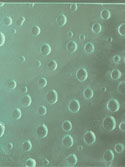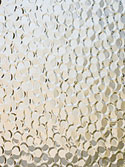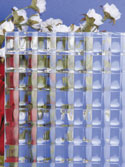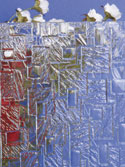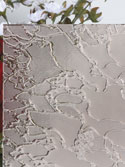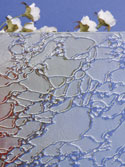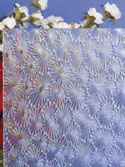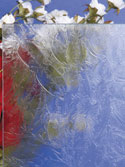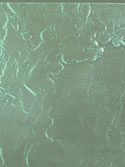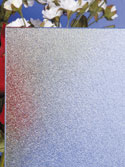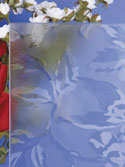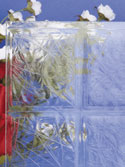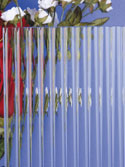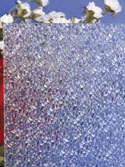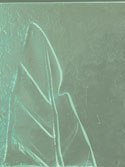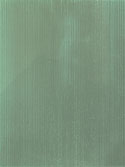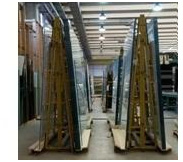 Today, flat glass comes in many highly specialized forms intended for different products and applications. Flat glass produced by way of the float process is often further processed to give it certain qualities or specificities.
Today, flat glass comes in many highly specialized forms intended for different products and applications. Flat glass produced by way of the float process is often further processed to give it certain qualities or specificities.
Annealed glass
Annealed glass is the basic flat glass product that is the first result of the float process. Also known as plate glass. It is common glass that tends to break into large, jagged shards. It is used in many applications including typical windows. It is also the starting material used to produce more advanced products through further processing such as laminating, tempering, coating, etc.
Tempered glass
Tempered glass is treated to be far more resistant to breakage than simple annealed glass and to break in a more predictable way when it does break, thus providing a major safety advantage in almost all of its applications.
Tempered glass is made from annealed glass treated with a thermal tempering process. The counteracting stresses in the tempering process give Tempered glass its increased mechanical resistance to breakage, and are also, when it does break, what cause it to produce regular, small, typically square fragments rather than long, dangerous shards that are far more likely to lead to injuries.
Laminated glass
Laminated glass is made of two or more layers of glass with one or more “interlayers” of polymeric material bonded between the glass layers.
Laminated glass offers many advantages. Safety and security are the best known of these, so rather than shattering on impact, laminated glass is held together by the interlayer. This reduces the safety hazard associated with shattered glass fragments, as well as, to some degree, the security risks associated with easy penetration. But the interlayer also provides other benefits, such as coloring, sound dampening, resistance to fire, ultraviolet filtering and other technologies that can be embedded in or with the interlayer.
Coated
Surface coatings can be applied to glass to modify its appearance and give it many of the advanced characteristics and functions available in today’s flat glass products, such as low maintenance, special reflection/transmission/absorption properties, scratch resistance, corrosion resistance, etc.
Mirrored glass
To produce mirrored glass, a metal coating is applied to one side of the glass. The coating is generally made of silver, aluminum, gold or chrome. For simple mirrored glass, a fully reflective metal coating is applied and then sealed with a protective layer. To produce “one-way” mirrors, a much thinner metal coating is used, with no additional sealing or otherwise opaque layer.
Mirrored glass is gaining a more prominent place in architecture, for important functional reasons as well as for the aesthetic effect.
Patterned
Patterned glass is flat glass whose surfaces display a regular pattern. The most common method for producing patterned glass is to pass heated glass (usually just after it exits the furnace where it is made) between rollers whose surfaces contain the negative relief of the desired pattern(s).
Patterned glass is mostly used in internal decoration and internal architecture. Today, it is typically used for functional reasons, where light but not transparency is desired, and the patterns are accordingly subtle. However, it has also at times been fashionable as a design feature in itself, in such cases often displaying more prominent patterns.
Starphire glass
Starphire glass is not the result of processing of annealed glass, but instead a specific type of melted glass. Starphire glass differs from other types of glass by its basic raw material composition. In particular, this glass is made with a very low iron-content in order to minimize its sun reflection properties. It therefore lets as much light as possible through the glass offering excellent clarity, which allows occupants to appreciate true colors and to enjoy unimpaired views.





